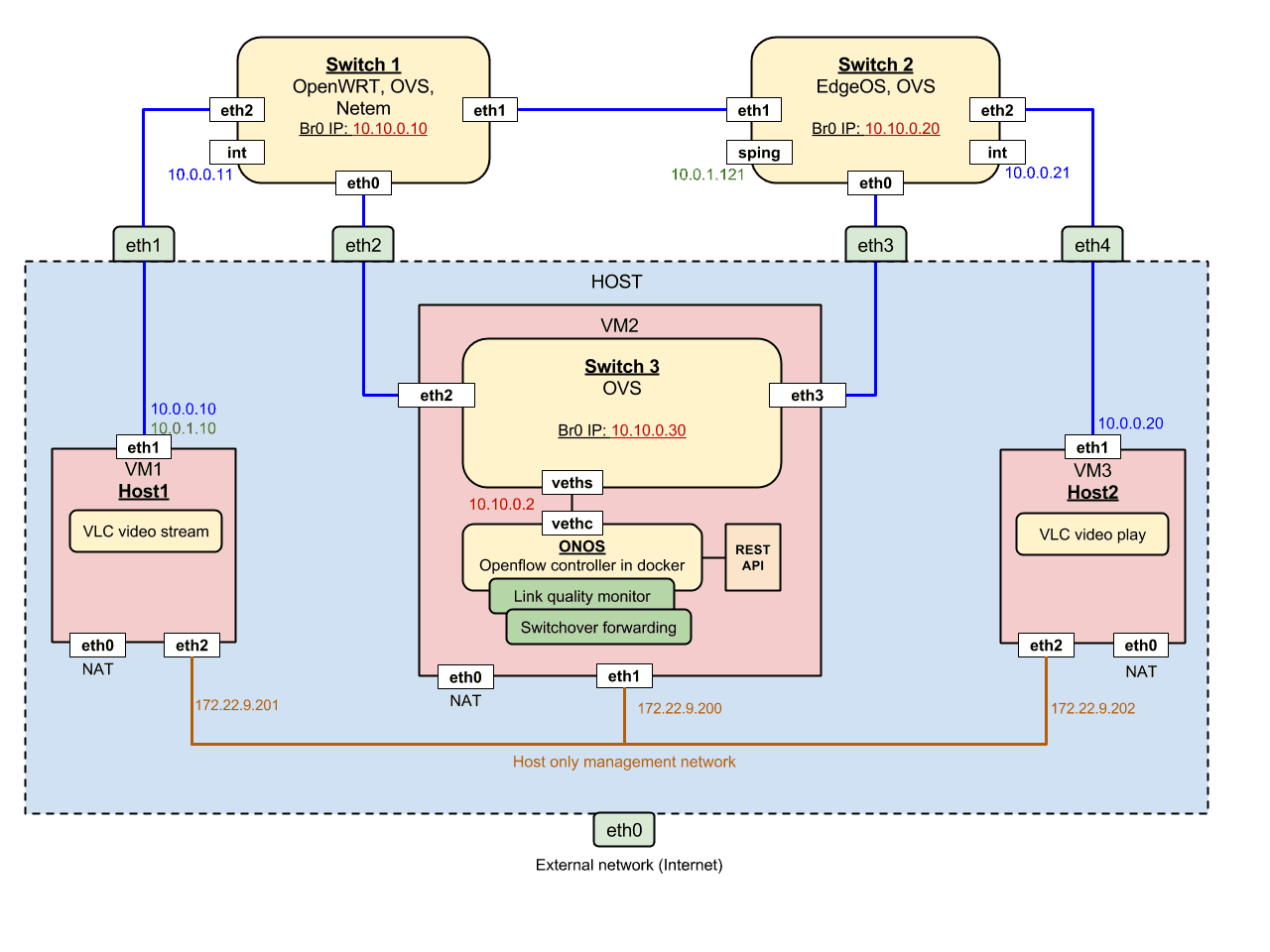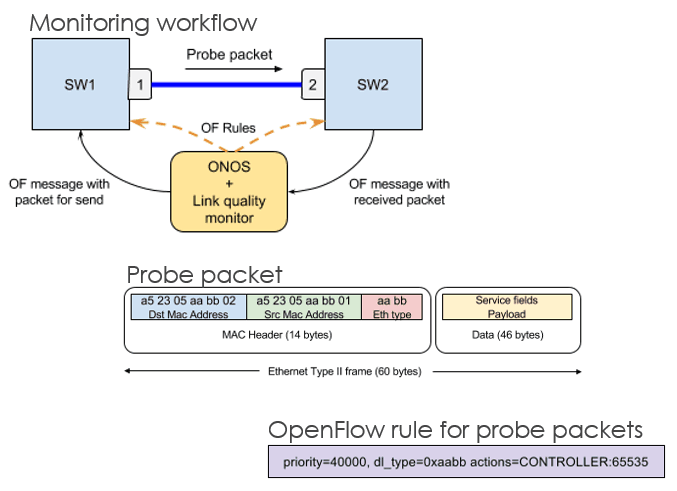In the first part of our post, we discussed how telecom providers can benefit from open source SDN solutions to ensure connection stability via dynamic topology switchover. We are now going to describe how we implemented dynamic topology switchover using an ONOS SDN controller and two custom-developed open source SDN applications – Link Quality Monitor and Switchover Forwarding. Demo video of these apps in action and download links below!
Dynamic topology switchover: Prerequisites
The first part of the proposed solution involves making the existing network SDN-enabled while preserving current equipment and infrastructure. In our case, it was enabled by installing OVS on current devices. The scheme below illustrates three variations of this implementation using OpenWrt, EdgeOS, and VM with Ubuntu (Switches 1,2,3).

Next, we need an SDN controller to make the whole logic work. Our controller of choice is ONOS – an open source controller designed for modular use with a customizable infrastructure, providing high availability and scalability. In our network, ONOS is running on a Docker container (VM2).
VM1 and VM3 contain “VLC video stream” and “VLC video player” software respectively (required to illustrate connection failure and link switchover on the example of a video stream).
VM2 also runs two custom-developed SDN applications that provide accurate real-time information about connection quality (Link Quality Monitor), and, in the case where it falls below an established threshold, address the SDN controller to re-route network traffic to a backup channel (Switchover Forwarding). Switchover Forwarding is connected to Link Quality Monitor, which in turn is directly linked to the ONOS controller.
Link Quality Monitor
Link Quality Monitor periodically generates test L2 packets and sends them to SW1 indicating “send to a specific port”. The packets are transmitted to the specified port and received by the neighbouring device –SW2. The received test packets are then returned to the controller and, accordingly, to the application. The quality of the link is basically the ratio of received and returned packets.

Switchover Forwarding
Switchover Forwarding obtains link quality data from Link Quality Monitor, and automatically changes the traffic path if the quality falls below the threshold value.

Demo & download
You can download both Link Quality Monitor and Switchover Forwarding from PLVision’s GitHub.
Meanwhile, watch a brief demo video to see them in action!
- Demo & Download: Open Source SDN Solution for Dynamic Topology Switchover - August 17, 2017
- DPDK-NGINX vs NGINX: Tech Overview and Performance Testing - June 8, 2016
- OpenDaylight-Based Traffic Steering for Web Server Load Balancing: PoC - April 19, 2016




